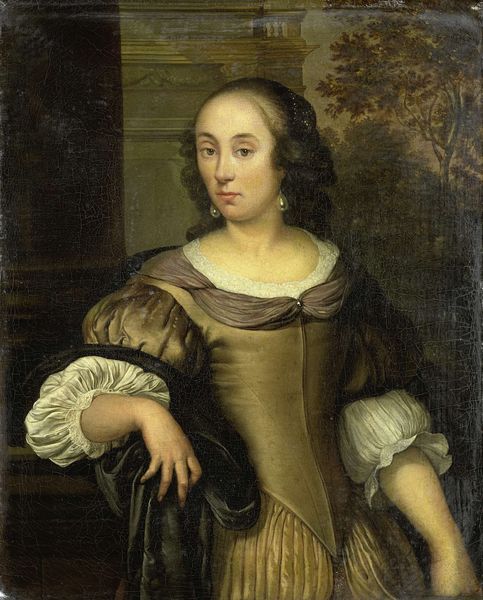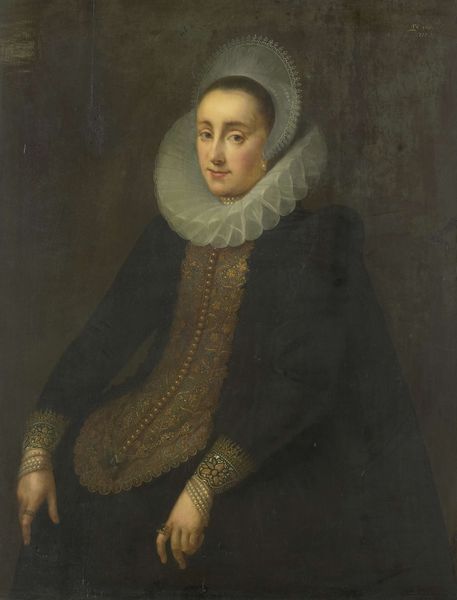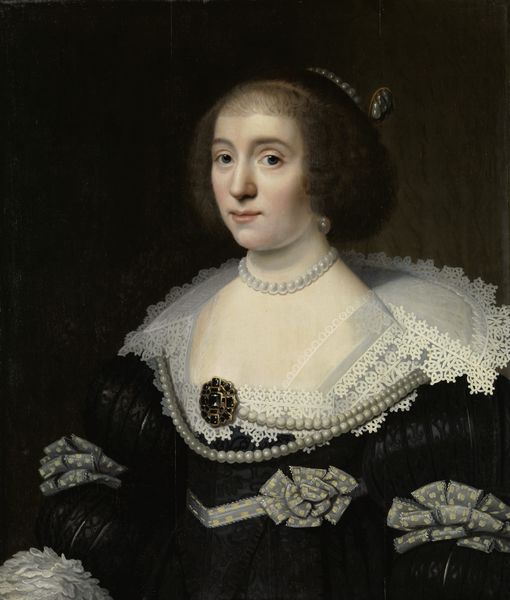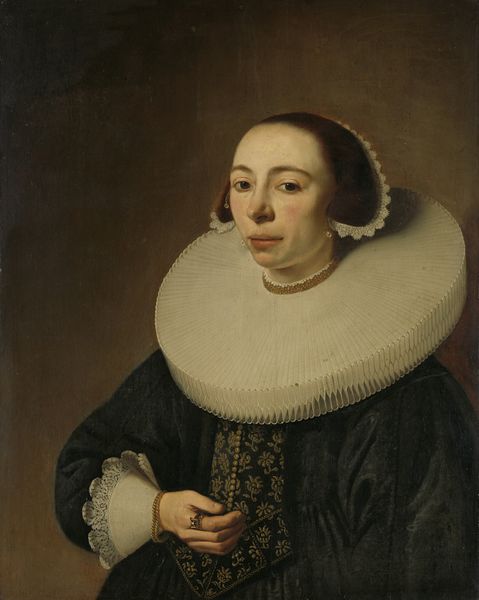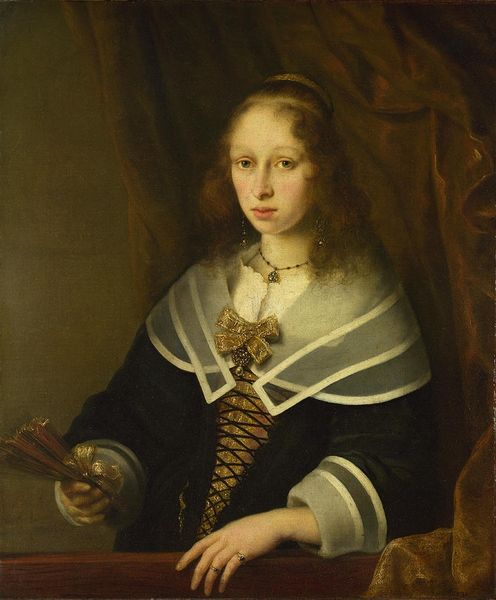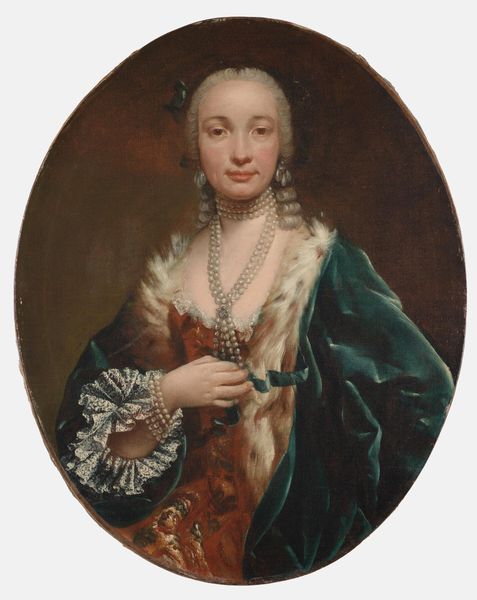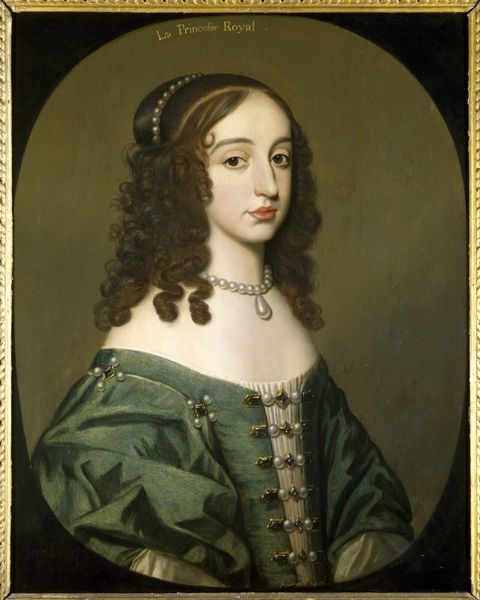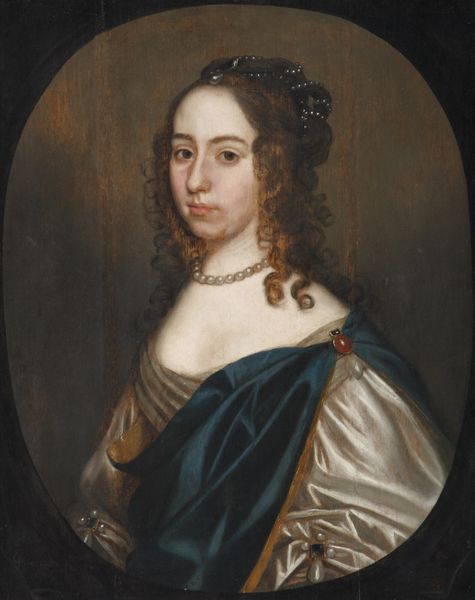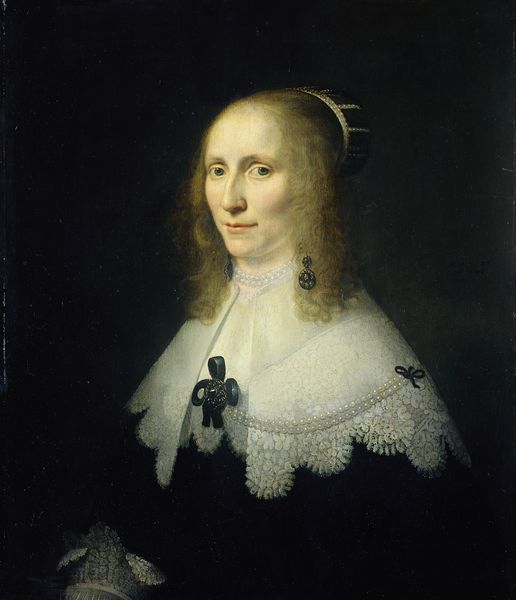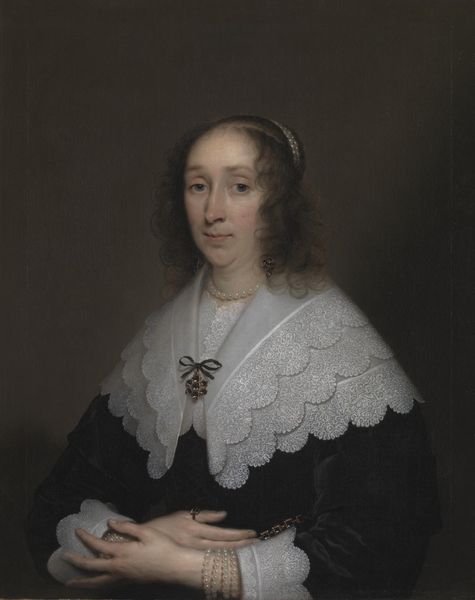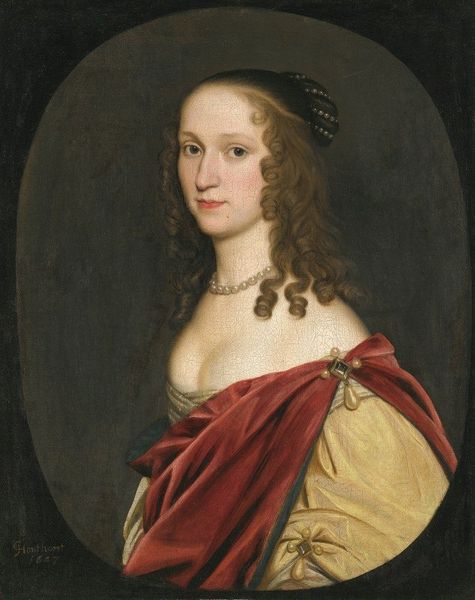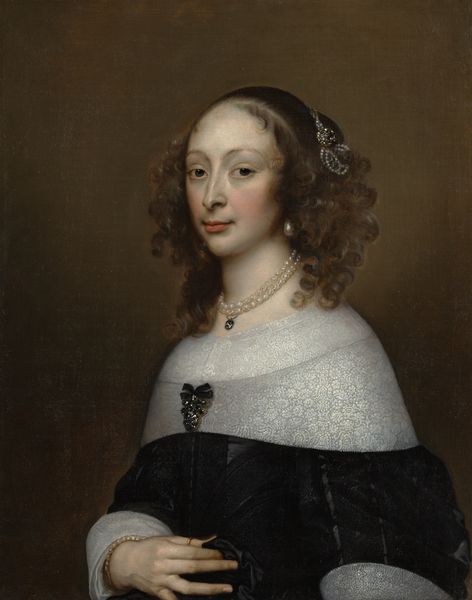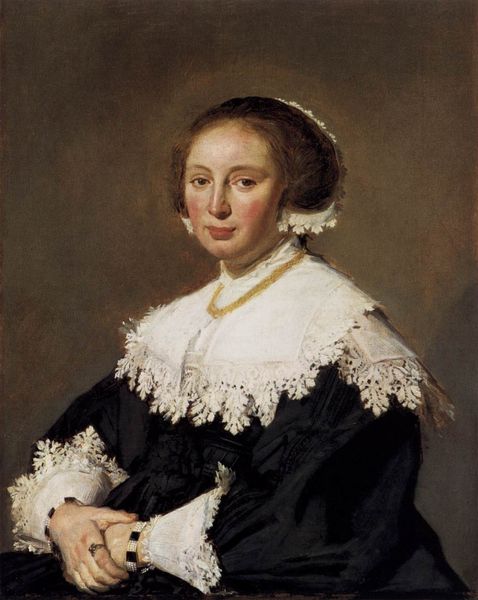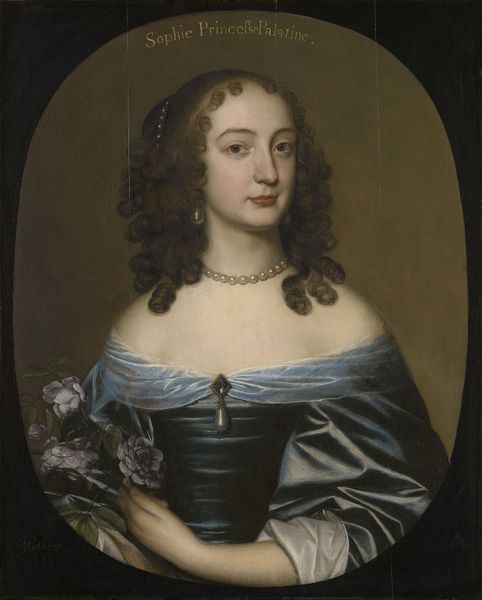
painting, oil-paint
#
portrait
#
baroque
#
painting
#
oil-paint
#
history-painting
Copyright: Public domain
Editor: Here we have Ferdinand Bol's "Portrait of a Woman," painted in 1642. It's an oil painting, currently residing at the Met. I'm struck by the contrast between the woman's pale skin and the dark background, which makes her presence feel quite luminous and yet somehow contained. How do you interpret this piece? Curator: I note the painting’s formal arrangements – consider how Bol employs chiaroscuro to articulate the sitter’s form against the ground. This heightens the dramatic tension of the portrait. Further, the interplay between the textures – the smoothness of the skin, the intricate lace, and the sheen of the pearls – introduces a complex haptic experience for the viewer. Note how these textural differences affect our understanding? Editor: I do. It seems like each texture suggests a certain status. The layering feels significant too, especially how the lace collar frames her face, guiding your eye. Is there more to unpack with how he frames her? Curator: Precisely. Bol manipulates the viewer's gaze through strategic compositional elements. The slightly averted gaze creates a sense of introspection or detachment. This subtle gesture compels the observer to engage more deeply with the subject's psychology. The composition’s arrangement prompts certain philosophical and intellectual engagements. It subtly references the aesthetic codes of Baroque portraiture while asserting a unique artistic voice. Editor: It's interesting how much meaning can be derived from purely visual elements. Thank you! Curator: My pleasure. Through meticulous observation, one can decode complex narratives and artistic intentions embedded within a single painting.
Comments
No comments
Be the first to comment and join the conversation on the ultimate creative platform.
